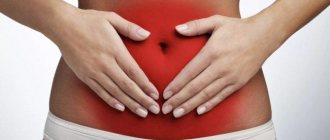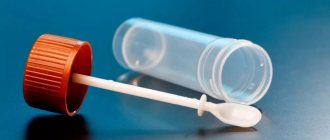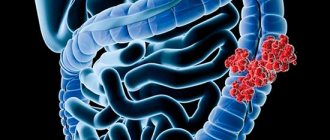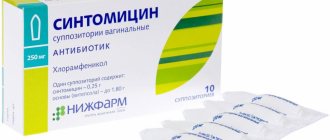Home » Diagnostics » Digital examination of the rectum
Digital rectal examination of the rectum is a diagnostic examination method that allows you to identify the presence of a pathological process in the organ. The main advantage of this method is considered to be ease of implementation and the absence of the need for special equipment. Thanks to digital rectal examination, serious diseases can be detected at an early stage. A digital examination is performed by a proctologist or urologist.
Indications for the study
The rectal examination procedure is indicated for people who are concerned about the following changes in their health:
- bowel dysfunction: constipation, diarrhea, or alternation of these symptoms;
- pain in the anus;
- bleeding from the anus;
- there is a suspicion of a malignant or benign tumor.
Digital rectal examination precedes other diagnostic methods: anoscopy, sigmoidoscopy, colonoscopy. It allows you to assess the patency of the distal rectum and identify contraindications to instrumental examination.
Colonoscopy
The most informative diagnostic method, in which it is possible to study the entire large intestine. During the procedure, the condition of the intestinal walls is assessed, neoplasms are identified, and it is possible to obtain biomaterial for a biopsy simultaneously with the examination.
The procedure also allows you to immediately eliminate polyps in the intestine when they are detected. The removed formations are sent for histological examination. Colonoscopy is carried out on the patient in the future to monitor the condition/restoration of the mucous membrane after excision and to detect new formations.
Colonoscopy is effective in diagnosing intestinal obstruction and detecting sources of intestinal bleeding.
Contraindications: poor blood clotting, pulmonary and heart failure, acute infections and severe forms of colitis.
What does it reveal?
Digital examination of the rectum helps to identify the following pathologies:
- pathological changes in the rectal canal: rectal fistula, cracks, changes in the consistency of the mucous membrane;
- rectal fissures;
- narrowing of the rectal lumen;
- dilatation of the veins of the lower part of the rectum, where nodes form;
- rectal tumors;
- presence of a foreign body;
- cystic formation.
This type of diagnosis also makes it possible to identify changes in the urological and gynecological parts: inflammation or oncology of the prostate gland in men and diseases of the internal genital organs in women.
X-ray examination of the colon
Of great importance in examining a proctological patient is the study of the condition of the entire colon using an x-ray method. Irrigoscopy is of greatest diagnostic value. It is with this that it is necessary to begin an X-ray examination of the colon.
Irrigoscopy
- X-ray examination of the colon with retrograde filling of it with a radiopaque suspension.
Irrigoscopy is used to clarify the diagnosis (malformations, tumors, chronic colitis, diverticulosis, fistulas, cicatricial narrowings, etc.).
This method has search, diagnostic and differential diagnostic value. During irrigoscopy, the following techniques are necessarily used: tight filling of the intestine, studying the relief of the mucous membrane after emptying the intestine from the contrast mass, double contrasting.
Tight filling of the colon with contrast mass
allows you to get an idea of the shape and location of the organ, the length of the intestine as a whole and its parts, the elasticity and extensibility of the intestinal walls, as well as identify gross pathological changes and the functional state of the Bauginian valve. The degree of emptying of the colon makes it possible to imagine the nature of the functional state of its various parts.
The study of the relief of the mucous membrane is of greatest importance for the diagnosis of various forms of colitis, manifested by functional disorders and organic changes in the walls of the colon.
Double contrast
- one of the most informative methods for identifying colon tumors. In addition, this technique clarifies the condition of the intestine itself - its elasticity and mobility.
To identify the motor-evacuation activity of the colon, the method of oral administration of barium suspension
followed by periodic (after 3, 9, 34, 48 hours, etc.) x-ray monitoring of its progress through the colon.
Irrigoscopy is contraindicated in severe condition of the patient and in case of perforation of the colon wall.
Fistulography
This method is used for recognition and differential diagnosis of diseases of the anorectal and sacrococcygeal areas in the presence of fistulas on the skin.
The main task of fistulography is to identify the direction of the fistula, its length, branches, formation of cavities and relationships with adjacent organs and tissues.
Direct injection of a contrast agent into the fistula tract is carried out by a coloproctologist in the X-ray room. Pictures are taken in frontal and lateral projections. The fistulography data is assessed by a radiologist.
Other X-ray techniques ( parietography, lymphography, angiography
) in coloproctological practice are used less frequently and for special indications.
Preparation
To make the procedure less uncomfortable and more informative, it is recommended to prepare for it:
- Normalization of intestinal function. You need to avoid foods that are too fatty and spicy, as well as foods that contribute to flatulence and bloating. These include legumes and fresh fruits.
- Diet restriction. A digital rectal examination is performed exclusively on an empty stomach, so the last meal should be taken in the evening, at least 12 hours before the scheduled diagnosis.
- Drinking regime. In addition to maintaining proper nutrition, you need to drink plenty of fluids.
- Purgation. Immediately before the procedure, it is recommended to perform a cleansing enema.
- If the patient has problems with stool (constipation), then mild laxatives may be prescribed, which must be taken three days before the procedure.
Performing a digital rectal examination
Before carrying out the procedure, you need to relax the muscles of the anus as much as possible - only in this case can the information content of the technique be guaranteed. The procedure for conducting the examination is as follows:
- The patient lies down on the couch, bends his legs at the knees and brings them as close to his chest as possible.
- Before starting the manipulation, the doctor puts on disposable gloves, onto which a special lubricant is applied. Lubrication makes the procedure easier.
- Next, the rectum is examined: the doctor spreads the patient’s buttocks with one hand and inserts one or two fingers into the rectum.
The procedure takes no more than 5-10 minutes.
How does a proctologist perform an examination?
The initial examination includes examination of the skin, assessment of the patient’s general appearance, since, for example, oncology can cause changes in the condition of the skin, pallor, and so on.
The doctor performs palpation, feeling the stomach and the condition of the intestines inside. This method is effective for determining the location of intestinal loops, the presence of compactions and fistula tracts, for assessing contraction of the intestinal walls, and for identifying organ displacement.
The next step is to assess the external condition of the skin around the anus. This procedure allows you to evaluate the presence of seals, cracks, redness and irritation. For a specialist, any deviations from the norm are an indicator of the disease, which determines subsequent prescriptions.
Initial internal examination
A mandatory procedure at the appointment is a digital examination of the rectum. This stage in some cases allows you to immediately diagnose the disease. During this examination, the specialist evaluates the internal condition of the intestinal walls, their elasticity and detects deviations from the norm, if any.
A rectal examination of the rectum is performed with the index finger. The doctor puts on medical gloves, lubricates his finger with Vaseline, and treats the patient’s anus with gel to reduce discomfort from the examination. The patient is asked to take a body position corresponding to the examination of certain areas of the rectum. Mostly a person lies on his side with his knees bent.
During the examination, a more detailed examination of a certain area may be required, so the specialist will offer to take a knee-elbow position or suggest an examination on a special gynecological chair. This is how a rectal examination of the rectum is performed in women who are accustomed to this, and in men, since this position of the body provides access to the necessary areas of the rectum.
On the chair, the rectum is examined with a rectal mirror if a visual inspection of the walls of the lower section is necessary. In case of pain in the anus, the procedure is performed under local anesthesia.
After basic examinations, the doctor makes a conclusion about the need for additional procedures that will help to understand the picture of the disease in detail.
Advantages and disadvantages of the method
Advantages
- simplicity of the procedure;
- takes a little time;
- Every proctologist and urologist has the technique;
- no need to use additional tools;
- a minimum number of contraindications to the examination.
Flaws
- impossibility of identifying the etiology of the tumor (malignant, benign);
- discomfort for the patient when performing the manipulation;
- limited diagnostic scope.
Despite the presence of shortcomings, digital rectal examination is considered a necessary diagnostic method, which is carried out without fail if a proctological or urological disease is suspected.
Other diagnostic methods
A digital rectal examination usually precedes more informative studies. These include:
- Anoscopy. The doctor performs a visual examination using an anoscope. This instrument resembles a gynecological speculum. When it is introduced into the rectum, only up to 8-10 cm of the anal canal can be seen. If this distance is not enough, a more informative type of diagnosis is used - rectoscopy.
- Rectoscopy. Visual inspection of the condition of the rectum in real time. The procedure is carried out using a rectoscope. The instrument is inserted into the anus and air is supplied so that the rectum straightens and the diagnosis becomes more informative. This method allows you to assess the condition of the rectum along its entire length.
- Colonoscopy. The rectum is examined using a colonoscope. This device is a small rubber hose with a metal tip. The advantage of this type of diagnostics is the ability to display images on a monitor. The tip is inserted into the anus and the condition of the rectum is assessed. If indicated, the entire colon can be examined.
Methods for examining proctological patients
LECTURE
TOPIC "Surgical diseases of the rectum and anus"
The student should gain an understanding of:
· principles of organization of coloproctological service in the Russian Federation
· diagnostic methods for examining the rectum and large intestine;
· main types of surgical pathology of the rectum, anus, their main clinical symptoms and principles of treatment;
· possible complications and their prevention;
· rules for preparing proctological patients for surgery and features of postoperative care.
Coloproctologists are a branch of clinical medicine that studies diseases of the rectum and surgical diseases of other parts of the large intestine.
In 1988, proctology was included in the list of new medical specialties (order of the USSR Ministry of Health No. 60), and since 1997 it was approved as the specialty “coloproctology”.
Currently, the All-Russian scientific and methodological center is the State Scientific Center of Coloproctology (SSCC) of the Ministry of Health of the Russian Federation. Among its tasks are such as managing the proctological service, studying the prevalence of proctological diseases among the population, developing and implementing recommendations for the diagnosis and treatment of patients with this pathology, studying the state of medical care and the population's needs for proctological care, providing advisory and organizational and methodological assistance Health care facilities in the country in the field of proctology, etc.
Proctological care for patients is provided by paramedics at health centers, first aid stations (first aid), surgeons at clinics and general surgical hospitals (qualified care), and coloproctologists at clinics and hospitals (specialized care).
Most often, patients with surgical pathology of the rectum need advice from a paramedic and provide first aid: hemorrhoids, paraproctitis, anal fissures, rectal prolapse and trauma. In addition, due to his professional duties, the paramedic must resolve issues regarding their rehabilitation and medical examination.
Anatomy and physiology of the rectum
Colon
- the distal part of the digestive tube, following the small intestine and ending with the external opening of the anal canal.
The total length is 1.75-2 m. It has two sections - the colon
(cecum, ascending colon, transverse colon, descending colon, sigmoid colon) and
rectum
.
The average length of the rectum is 15-16 cm. It has three sections:
· supramullary (4-5 cm), covered with peritoneum, has a small, triangular mesentery;
· ampullary section (8-10 cm). Most of it is located extraperitoneally. It narrows at the bottom, forming an anal funnel, and passes into the anal canal.
· perineal section - anal canal, 2.5 - 4 cm long. It contains the obturator apparatus of the rectum in the form of an internal and external sphincter. Contraction of the external sphincter is controlled by the human consciousness
Rectum
borders on the following organs: in front in men - the prostate gland, vas deferens, part of the seminal vesicles and bladder, in women - the vagina and uterus.
The main physiological function of the rectum is the accumulation and evacuation of intestinal contents. Food, from the moment it is taken until it is thrown out in the form of feces, remains in the gastrointestinal tract for 18-24 hours. The act of defecation can be one-stage or two-stage.
Methods for examining proctological patients
Examination of patients with rectal pathology includes a survey, examination of the perineum and anus, and the use of special examination methods. Special methods include: digital examination of the rectum, examination using a rectal speculum, anoscopy, sigmoidoscopy, fistulography, biopsy, coprological studies.
Survey.
When collecting anamnesis, it is necessary to clarify with the patient:
1. The nature of the pain, if any.
2. Character of defecation: regularity of bowel movements before the disease, increased frequency or delay during the development of the disease.
3. The consistency of the stool is formed, mushy, liquid, “sheeplike.” The color of stool is black (melena), discolored, yellow.
4. Are there pathological impurities in the stool in the form of mucus, pus, blood (scarlet, dark, mixed with feces). If blood is present, you need to find out the nature of its release (stream, drops or clots).
The examination can be carried out in different positions of the patient: on the back on a gynecological chair, on the side with the legs brought to the stomach and in the knee-elbow position. Hemorrhoids are best seen when the patient strains in a squatting position. Upon examination, you can see the condition of the skin around the anus and in the perineum (the presence of signs of inflammation), external hemorrhoids, openings of pararectal fistulas, rectal prolapse, and traces of injury.
Digital examination is a mandatory method for examining the rectum. It is carried out with the index finger of the right hand, wearing a rubber glove lubricated with Vaseline. In this way, it is possible to determine tumors, hemorrhoids, areas of compaction in the rectum, and the condition of the peri-rectal zone at a depth of 10-13 cm.
A more detailed examination of the rectal mucosa is performed using a rectal speculum (anoscopy) after a cleansing enema.
The examination is carried out with the patient in the knee-elbow position. A rectal mirror, generously lubricated with Vaseline, is inserted to a depth of 10 cm, and then, carefully spreading its jaws, the mirror is removed and the walls of the ampulla and anus are examined. Examination with a rectal mirror is not carried out in case of acute inflammatory changes in the anus or severe pain.
Sigmoidoscopy is an endoscopic examination method that allows you to clarify digital examination data and identify pathological formations in the rectum and lower parts of the sigmoid colon over a distance of 25-30 cm.
Preparation for the study begins 2 days in advance: the patient is prescribed a slag-free diet and laxatives. Eating is canceled the evening before and in the morning on the day of the study. At night, a cleansing enema is done, which is repeated twice a day of the study with an interval of 2 hours.
For complex rectal fistulas, fistulography is used - an X-ray examination of the fistula tract filled with a contrast agent.
Surgical diseases of the rectum
non-tumor origin
Hemorrhoids are varicose veins in the lower rectum and anus. This is one of the most common diseases of the rectum, and men are affected twice as often.
Etiology
· Congenital and acquired insufficiency of the venous system and congestion in the veins of the rectum.
· Mechanical factors (constipation, sedentary lifestyle, nature of work, pregnancy, etc.), i.e. factors that increase intra-abdominal pressure and create stagnation of blood in the pelvic veins.
· Exo- and endogenous intoxications (abuse of alcohol, spicy foods, strong tea or coffee, etc.)
· Infection (phlebitis of hemorrhoids, colitis, cryptogenic infection).
Classification
1. Downstream: acute and chronic hemorrhoids.
2. According to the location of the nodes: external or subcutaneous, internal or submucosal. The external ones have the form of individual protrusions, the size of a cherry and occupying either part or the entire circumference of the anus. Internal hemorrhoids look like separate tumors of soft elastic consistency, pink in color.
3. Uncomplicated and complicated (inflammation, bleeding, compression and thrombosis with possible necrosis and purulent melting of nodes, prolapse of internal nodes)
For many people, as they age, their hemorrhoids may enlarge. In cases where a moderate increase in nodes is determined only upon examination, and there are no complaints, they speak of asymptomatic hemorrhoids, “hemorrhoids without hemorrhoids” and are not considered a disease.
Clinical course.
Hemorrhoids are often accompanied by chronic constipation. In a significant number of patients, these two diseases are combined. Constipation usually starts first.
Hemorrhoids often begin with a period of precursors. There are unpleasant sensations in the anus, slight itching,
some
difficulty during bowel movements.
This period lasts from several months to several years.
bleeding
appears - from traces of blood on the stool (in the form of streaks of blood on hard feces and on toilet paper) to massive bleeding.
With external hemorrhoids, bleeding is very rare, but with internal hemorrhoids they are the main symptom. In addition to bleeding, a common complaint is the feeling of a foreign body in the rectum, the appearance of external
or
prolapse of internal hemorrhoids.
During the course of the disease, two stages are distinguished: acute
(exacerbation) and
chronic.
Acute hemorrhoids
(inflammation of hemorrhoids, strangulated hemorrhoids, thrombosis of hemorrhoids).
There are three degrees of severity of acute hemorrhoids:
1. In grade 1, external hemorrhoids are small in size and have a tight-elastic consistency. They are painful on palpation. The skin around the anus is slightly hyperemic. The main complaints are pain, burning sensation and itching, aggravated by defecation.
2. In grade 2, more pronounced swelling of most of the perianal area and hyperemia are observed. Palpation of this area and digital examination of the rectum are sharply painful. Patients complain of severe pain in the anus, especially when walking and sitting.
3. In grade 3, the entire circumference of the anus is occupied by an inflammatory tumor. Palpation of the nodes is very painful. In the area of the anus, purple or bluish-purple hemorrhoids with fibrin films are visible. In the absence of timely treatment, node necrosis may occur. In this case, the mucous membrane covering the nodes becomes ulcerated, and black areas with a coating of fibrin appear. In advanced cases, inflammation spreads to the peri-rectal tissue and paraproctitis develops (severe purulent complication).
Chronic hemorrhoids.
The main manifestations are
episodic bleeding
, often during bowel movements. The color of the blood is usually scarlet, in the form of a “splash” when straining or a few drops at the end of a bowel movement. Dark blood and clots may be discharged if blood remains in the rectum from a previous bowel movement. Bleeding is usually the first sign of this disease. After 5-8 years, prolapse of hemorrhoids appears - first during bowel movements, then when coughing and sneezing, straining, and without any strain. At first, the patient can easily straighten them only by volitional contraction; over time, the nodes have to be straightened by hand.
In the chronic stage, patients retain their ability to work; the use of simple measures allows them to periodically completely forget about the disease. In the acute stage, hospitalization is often required; with adequate treatment, the inflammation subsides, and the disease again enters the chronic stage.
Treatment
can be local and general, conservative and operative. Hemorrhoids that occur without pain or complications can be treated conservatively. You just need to regulate bowel movements and implement a hygienic regime.
When treated early from the moment of illness - recovery
occurs much faster and can be performed on an outpatient basis, without
hospitalization.
Local treatment for complicated hemorrhoids is aimed at:
§ reduction of pain (non-narcotic analgesics, suppositories);
§ resolution of thrombosis phenomena (venobene, gelpan, hepatrombin, etc.);
§ reduction of the inflammatory process (proctosedyl, ultraproct, pasteurizan - forte, etc. You can also use the old recipe - lead lotions).
§ stopping bleeding by prescribing hemostatic drugs - beriplast HS, feracryl.
§ In case of prolapse and strangulation of internal hemorrhoids, before the development of inflammation and thrombosis, their careful reduction is indicated after preliminary preparation of the patient.
General treatment:
· regulation of the frequency of bowel movements (1-2 times a day).
· normalization of the consistency of stool (stool should not be excessively dense or, conversely, liquid, preferably in the form of a “soft sausage”). This is achieved by individual selection of a diet containing laxative products, including vegetables and fruits. For constipation, hydrophilic colloids are prescribed, which retain water and soften the intestinal contents: bran, laminaride, flaxseed, etc. For frequent bowel movements, gastrolit and rehydron can be recommended.
· treatment of chronic venous insufficiency (venoruton, troxevasin, glivenol, detralex, etc.)
Hygienic regime.
Using an ascending shower or washing the anus after bowel movements
Surgical treatment
consists of either ligating hemorrhoids or removing them.
Preoperative preparation of patients for emergency hemorrhoidectomy involves determining the blood group and Rh factor, conducting blood and urine tests, and taking an electrocardiogram. According to indications, patients are examined by a therapist, gynecologist and other specialists. Before the operation, the skin around the anus is shaved, the area of the anus and the entire perineum is washed with a weak solution of potassium permanganate. Cleansing enemas are not given before urgent operations because of the possibility of increased pain, loss of nodes during defecation and, most importantly, the danger of injury to thrombosed hemorrhoids and bleeding from them. For these reasons, digital and instrumental examination of the rectum is not performed.
Preparation for delayed hemorrhoidectomy is carried out differently. In a number of patients with moderate severity of acute hemorrhoids and in all with severe severity, conservative therapy is carried out in the preoperative period. Upon admission of the patient to the hospital, strict bed rest is prescribed. In the first days, defecation is carried out only after a counter enema. The day before surgery, patients receive a slag-free diet. The evening before and on the morning of the day of surgery, patients are given two volumetric cleansing enemas of 1 liter of water each. In the morning before surgery, patients undergo digital examination of the rectum and sigmoidoscopy.
Anesthesia and sacral anesthesia are the most convenient methods of pain relief, but local infiltration anesthesia is quite acceptable for the removal of single thrombosed external hemorrhoids.
Postoperative period
For all patients after surgery, an ice pack is applied to the perineal area for 2 hours. On the 1st day after surgery, painkillers are prescribed. Stool fixing agents are not used. In all patients, the first dressing is performed the next day after surgery. After the operation, which is performed with suturing of the wounds tightly, during the first dressing, the sutured wounds are treated with a 1% alcohol solution of iodine and a semi-alcohol bandage is applied to the anus. From the 2nd day, patients are transferred to ward mode. On the 3rd day in the evening, they give 30 ml of Vaseline oil to drink and the next morning they give a cleansing enema. After stool and water toilet of the anal area, a suppository with painkillers is introduced and a T-shaped semi-alcohol bandage is applied. Such dressings are performed before the patient is discharged from the hospital.
In the first 2 days after surgery, patients receive broth, porridge, mashed potatoes, minced meat, raw eggs, and unsweetened tea. From the 3rd day the diet is expanded, they are allowed to eat boiled meat, fish, vegetables, and on days 6-7 fresh vegetables and fruits. Avoid eating spicy and irritating foods.
, minimally invasive (low-traumatic) have been increasingly used , mainly used not in a hospital, but on an outpatient basis: injections of sclerosing substances into hemorrhoids, their photocoagulation, cryodestruction, ligation using latex washers.
LECTURE
TOPIC "Surgical diseases of the rectum and anus"
The student should gain an understanding of:
· principles of organization of coloproctological service in the Russian Federation
· diagnostic methods for examining the rectum and large intestine;
· main types of surgical pathology of the rectum, anus, their main clinical symptoms and principles of treatment;
· possible complications and their prevention;
· rules for preparing proctological patients for surgery and features of postoperative care.
Coloproctologists are a branch of clinical medicine that studies diseases of the rectum and surgical diseases of other parts of the large intestine.
In 1988, proctology was included in the list of new medical specialties (order of the USSR Ministry of Health No. 60), and since 1997 it was approved as the specialty “coloproctology”.
Currently, the All-Russian scientific and methodological center is the State Scientific Center of Coloproctology (SSCC) of the Ministry of Health of the Russian Federation. Among its tasks are such as managing the proctological service, studying the prevalence of proctological diseases among the population, developing and implementing recommendations for the diagnosis and treatment of patients with this pathology, studying the state of medical care and the population's needs for proctological care, providing advisory and organizational and methodological assistance Health care facilities in the country in the field of proctology, etc.
Proctological care for patients is provided by paramedics at health centers, first aid stations (first aid), surgeons at clinics and general surgical hospitals (qualified care), and coloproctologists at clinics and hospitals (specialized care).
Most often, patients with surgical pathology of the rectum need advice from a paramedic and provide first aid: hemorrhoids, paraproctitis, anal fissures, rectal prolapse and trauma. In addition, due to his professional duties, the paramedic must resolve issues regarding their rehabilitation and medical examination.
Anatomy and physiology of the rectum
Colon
- the distal part of the digestive tube, following the small intestine and ending with the external opening of the anal canal.
The total length is 1.75-2 m. It has two sections - the colon
(cecum, ascending colon, transverse colon, descending colon, sigmoid colon) and
rectum
.
The average length of the rectum is 15-16 cm. It has three sections:
· supramullary (4-5 cm), covered with peritoneum, has a small, triangular mesentery;
· ampullary section (8-10 cm). Most of it is located extraperitoneally. It narrows at the bottom, forming an anal funnel, and passes into the anal canal.
· perineal section - anal canal, 2.5 - 4 cm long. It contains the obturator apparatus of the rectum in the form of an internal and external sphincter. Contraction of the external sphincter is controlled by the human consciousness
Rectum
borders on the following organs: in front in men - the prostate gland, vas deferens, part of the seminal vesicles and bladder, in women - the vagina and uterus.
The main physiological function of the rectum is the accumulation and evacuation of intestinal contents. Food, from the moment it is taken until it is thrown out in the form of feces, remains in the gastrointestinal tract for 18-24 hours. The act of defecation can be one-stage or two-stage.
Methods for examining proctological patients
Examination of patients with rectal pathology includes a survey, examination of the perineum and anus, and the use of special examination methods. Special methods include: digital examination of the rectum, examination using a rectal speculum, anoscopy, sigmoidoscopy, fistulography, biopsy, coprological studies.
Survey.
When collecting anamnesis, it is necessary to clarify with the patient:
1. The nature of the pain, if any.
2. Character of defecation: regularity of bowel movements before the disease, increased frequency or delay during the development of the disease.
3. The consistency of the stool is formed, mushy, liquid, “sheeplike.” The color of stool is black (melena), discolored, yellow.
4. Are there pathological impurities in the stool in the form of mucus, pus, blood (scarlet, dark, mixed with feces). If blood is present, you need to find out the nature of its release (stream, drops or clots).
The examination can be carried out in different positions of the patient: on the back on a gynecological chair, on the side with the legs brought to the stomach and in the knee-elbow position. Hemorrhoids are best seen when the patient strains in a squatting position. Upon examination, you can see the condition of the skin around the anus and in the perineum (the presence of signs of inflammation), external hemorrhoids, openings of pararectal fistulas, rectal prolapse, and traces of injury.
Digital examination is a mandatory method for examining the rectum. It is carried out with the index finger of the right hand, wearing a rubber glove lubricated with Vaseline. In this way, it is possible to determine tumors, hemorrhoids, areas of compaction in the rectum, and the condition of the peri-rectal zone at a depth of 10-13 cm.
A more detailed examination of the rectal mucosa is performed using a rectal speculum (anoscopy) after a cleansing enema.
The examination is carried out with the patient in the knee-elbow position. A rectal mirror, generously lubricated with Vaseline, is inserted to a depth of 10 cm, and then, carefully spreading its jaws, the mirror is removed and the walls of the ampulla and anus are examined. Examination with a rectal mirror is not carried out in case of acute inflammatory changes in the anus or severe pain.
Sigmoidoscopy is an endoscopic examination method that allows you to clarify digital examination data and identify pathological formations in the rectum and lower parts of the sigmoid colon over a distance of 25-30 cm.
Preparation for the study begins 2 days in advance: the patient is prescribed a slag-free diet and laxatives. Eating is canceled the evening before and in the morning on the day of the study. At night, a cleansing enema is done, which is repeated twice a day of the study with an interval of 2 hours.
For complex rectal fistulas, fistulography is used - an X-ray examination of the fistula tract filled with a contrast agent.
Surgical diseases of the rectum
non-tumor origin
Hemorrhoids are varicose veins in the lower rectum and anus. This is one of the most common diseases of the rectum, and men are affected twice as often.
Etiology
· Congenital and acquired insufficiency of the venous system and congestion in the veins of the rectum.
· Mechanical factors (constipation, sedentary lifestyle, nature of work, pregnancy, etc.), i.e. factors that increase intra-abdominal pressure and create stagnation of blood in the pelvic veins.
· Exo- and endogenous intoxications (abuse of alcohol, spicy foods, strong tea or coffee, etc.)
· Infection (phlebitis of hemorrhoids, colitis, cryptogenic infection).
Classification
1. Downstream: acute and chronic hemorrhoids.
2. According to the location of the nodes: external or subcutaneous, internal or submucosal. The external ones have the form of individual protrusions, the size of a cherry and occupying either part or the entire circumference of the anus. Internal hemorrhoids look like separate tumors of soft elastic consistency, pink in color.
3. Uncomplicated and complicated (inflammation, bleeding, compression and thrombosis with possible necrosis and purulent melting of nodes, prolapse of internal nodes)
For many people, as they age, their hemorrhoids may enlarge. In cases where a moderate increase in nodes is determined only upon examination, and there are no complaints, they speak of asymptomatic hemorrhoids, “hemorrhoids without hemorrhoids” and are not considered a disease.
Clinical course.
Hemorrhoids are often accompanied by chronic constipation. In a significant number of patients, these two diseases are combined. Constipation usually starts first.
Hemorrhoids often begin with a period of precursors. There are unpleasant sensations in the anus, slight itching,
some
difficulty during bowel movements.
This period lasts from several months to several years.
bleeding
appears - from traces of blood on the stool (in the form of streaks of blood on hard feces and on toilet paper) to massive bleeding.
With external hemorrhoids, bleeding is very rare, but with internal hemorrhoids they are the main symptom. In addition to bleeding, a common complaint is the feeling of a foreign body in the rectum, the appearance of external
or
prolapse of internal hemorrhoids.
During the course of the disease, two stages are distinguished: acute
(exacerbation) and
chronic.
Acute hemorrhoids
(inflammation of hemorrhoids, strangulated hemorrhoids, thrombosis of hemorrhoids).
There are three degrees of severity of acute hemorrhoids:
1. In grade 1, external hemorrhoids are small in size and have a tight-elastic consistency. They are painful on palpation. The skin around the anus is slightly hyperemic. The main complaints are pain, burning sensation and itching, aggravated by defecation.
2. In grade 2, more pronounced swelling of most of the perianal area and hyperemia are observed. Palpation of this area and digital examination of the rectum are sharply painful. Patients complain of severe pain in the anus, especially when walking and sitting.
3. In grade 3, the entire circumference of the anus is occupied by an inflammatory tumor. Palpation of the nodes is very painful. In the area of the anus, purple or bluish-purple hemorrhoids with fibrin films are visible. In the absence of timely treatment, node necrosis may occur. In this case, the mucous membrane covering the nodes becomes ulcerated, and black areas with a coating of fibrin appear. In advanced cases, inflammation spreads to the peri-rectal tissue and paraproctitis develops (severe purulent complication).
Chronic hemorrhoids.
The main manifestations are
episodic bleeding
, often during bowel movements. The color of the blood is usually scarlet, in the form of a “splash” when straining or a few drops at the end of a bowel movement. Dark blood and clots may be discharged if blood remains in the rectum from a previous bowel movement. Bleeding is usually the first sign of this disease. After 5-8 years, prolapse of hemorrhoids appears - first during bowel movements, then when coughing and sneezing, straining, and without any strain. At first, the patient can easily straighten them only by volitional contraction; over time, the nodes have to be straightened by hand.
In the chronic stage, patients retain their ability to work; the use of simple measures allows them to periodically completely forget about the disease. In the acute stage, hospitalization is often required; with adequate treatment, the inflammation subsides, and the disease again enters the chronic stage.
Treatment
can be local and general, conservative and operative. Hemorrhoids that occur without pain or complications can be treated conservatively. You just need to regulate bowel movements and implement a hygienic regime.
When treated early from the moment of illness - recovery
occurs much faster and can be performed on an outpatient basis, without
hospitalization.
Local treatment for complicated hemorrhoids is aimed at:
§ reduction of pain (non-narcotic analgesics, suppositories);
§ resolution of thrombosis phenomena (venobene, gelpan, hepatrombin, etc.);
§ reduction of the inflammatory process (proctosedyl, ultraproct, pasteurizan - forte, etc. You can also use the old recipe - lead lotions).
§ stopping bleeding by prescribing hemostatic drugs - beriplast HS, feracryl.
§ In case of prolapse and strangulation of internal hemorrhoids, before the development of inflammation and thrombosis, their careful reduction is indicated after preliminary preparation of the patient.
General treatment:
· regulation of the frequency of bowel movements (1-2 times a day).
· normalization of the consistency of stool (stool should not be excessively dense or, conversely, liquid, preferably in the form of a “soft sausage”). This is achieved by individual selection of a diet containing laxative products, including vegetables and fruits. For constipation, hydrophilic colloids are prescribed, which retain water and soften the intestinal contents: bran, laminaride, flaxseed, etc. For frequent bowel movements, gastrolit and rehydron can be recommended.
· treatment of chronic venous insufficiency (venoruton, troxevasin, glivenol, detralex, etc.)
Hygienic regime.
Using an ascending shower or washing the anus after bowel movements
Surgical treatment
consists of either ligating hemorrhoids or removing them.
Preoperative preparation of patients for emergency hemorrhoidectomy involves determining the blood group and Rh factor, conducting blood and urine tests, and taking an electrocardiogram. According to indications, patients are examined by a therapist, gynecologist and other specialists. Before the operation, the skin around the anus is shaved, the area of the anus and the entire perineum is washed with a weak solution of potassium permanganate. Cleansing enemas are not given before urgent operations because of the possibility of increased pain, loss of nodes during defecation and, most importantly, the danger of injury to thrombosed hemorrhoids and bleeding from them. For these reasons, digital and instrumental examination of the rectum is not performed.
Preparation for delayed hemorrhoidectomy is carried out differently. In a number of patients with moderate severity of acute hemorrhoids and in all with severe severity, conservative therapy is carried out in the preoperative period. Upon admission of the patient to the hospital, strict bed rest is prescribed. In the first days, defecation is carried out only after a counter enema. The day before surgery, patients receive a slag-free diet. The evening before and on the morning of the day of surgery, patients are given two volumetric cleansing enemas of 1 liter of water each. In the morning before surgery, patients undergo digital examination of the rectum and sigmoidoscopy.
Anesthesia and sacral anesthesia are the most convenient methods of pain relief, but local infiltration anesthesia is quite acceptable for the removal of single thrombosed external hemorrhoids.
Postoperative period
For all patients after surgery, an ice pack is applied to the perineal area for 2 hours. On the 1st day after surgery, painkillers are prescribed. Stool fixing agents are not used. In all patients, the first dressing is performed the next day after surgery. After the operation, which is performed with suturing of the wounds tightly, during the first dressing, the sutured wounds are treated with a 1% alcohol solution of iodine and a semi-alcohol bandage is applied to the anus. From the 2nd day, patients are transferred to ward mode. On the 3rd day in the evening, they give 30 ml of Vaseline oil to drink and the next morning they give a cleansing enema. After stool and water toilet of the anal area, a suppository with painkillers is introduced and a T-shaped semi-alcohol bandage is applied. Such dressings are performed before the patient is discharged from the hospital.
In the first 2 days after surgery, patients receive broth, porridge, mashed potatoes, minced meat, raw eggs, and unsweetened tea. From the 3rd day the diet is expanded, they are allowed to eat boiled meat, fish, vegetables, and on days 6-7 fresh vegetables and fruits. Avoid eating spicy and irritating foods.
, minimally invasive (low-traumatic) have been increasingly used , mainly used not in a hospital, but on an outpatient basis: injections of sclerosing substances into hemorrhoids, their photocoagulation, cryodestruction, ligation using latex washers.









